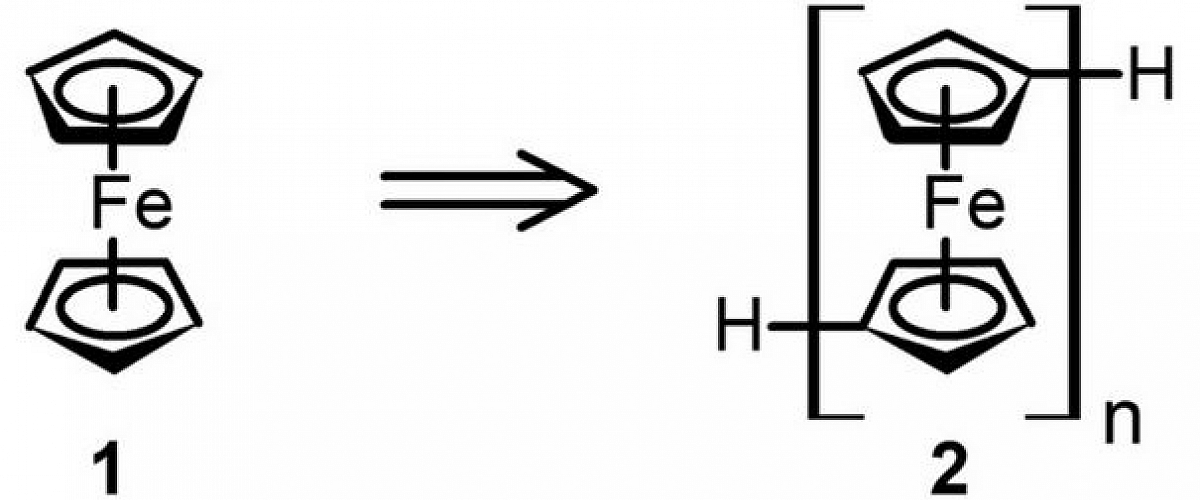
On‐Surface Synthesis of Polyferrocenylene and its Single‐Chain Conformational and Electrical Transport Properties
Unlike intrinsically conductive organic polymers, which are central to organic electronics/photovoltaics, metallopolymers contain multiple redox‐active centers allowing extra control of their intriguing properties. Ferrocene polymers are particularly attractive in this regard, but research of the iconic poly(1,1′‐ferrocenylene), a main‐chain ferrocene polymer with the most densely bound redox‐active iron centers, has practically stopped because it is an insoluble and rather inhomogeneous material. Herein, its synthesis on the Ag(111) surface is reported, based on the Ullmann coupling of 1′,1″′‐diiodo‐1,1″‐biferrocene. Conformationally flexible single‐chain nanowires up to 50 nm in length, thus overcoming the limits of conventional solution polymerization, are characterized by scanning probe microscopy techniques achieving atomic resolution. Single‐chain electrical conductivity measurements are performed in the longitudinal directions revealing apparent metal‐to‐semiconductor transition (depending on the number of ferrocene units lifted from the surface). A simple transport model is established to rationalize this observation.
V. M. Santhini, O. Stetsovych, M. Ondráček, J. I. M. Moreno, P. Mutombo, B. de la Torre, M. Švec, J. Klívar, I.G.Stará, H. Vázquez, I. Starý, P. Jelínek: On‐Surface Synthesis of Polyferrocenylene and its Single‐Chain Conformational and Electrical Transport Properties. Advanced Functional Materials 2020, 2006391. https://doi.org/10.1002/adfm.202006391